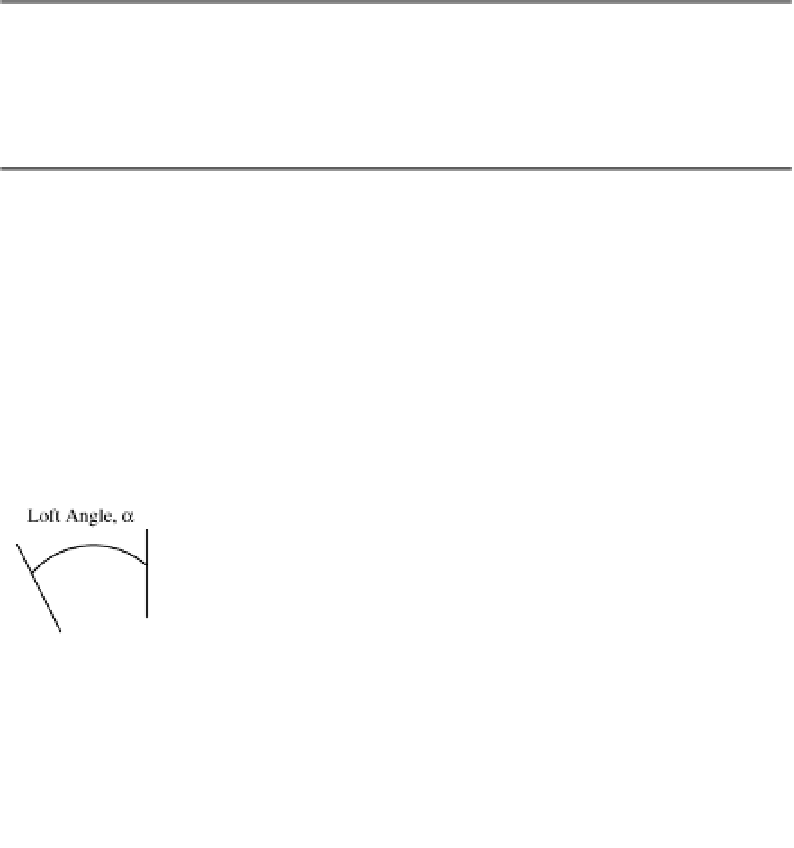Game Development Reference
In-Depth Information
reducing the aerodynamic drag of the golf ball in flight. There are several commonly used dimple
patterns for golf balls, and typically there are 350-500 dimples on the surface of a golf ball.
The coefficient of drag of a golf ball is a function of Reynolds number and how fast the ball
is spinning. For a Reynolds number of 150,000 (approximately the value for a golf ball traveling
at 60
m/s
), the drag coefficient will range between 0.21 and 0.25 depending on the spin rate.
Lower spin rates will result in lower drag coefficients. The drag coefficient for a smooth sphere
at these conditions ranges from 0.4 to 0.47, so the dimpled surface significantly reduces the
drag on the golf ball.
The weight and size data of standard golf balls is summarized in Table 7-1.
Table 7-1.
Golf Ball Specifications
Quantity
Two-Piece Ball
Three-Piece Ball
Mass
0.0459
kg
(1.62
oz
)
0.0459
kg
(1.62
oz
)
Diameter
0.0427
m
(1.68
in
)
0.0427
m
(1.68
in
)
Coefficient of restitution
0.78
0.68
Drag coefficient
0.21-0.25
0.22-0.35
A modern golf club consists of a metal or graphite shaft connected to a head. When the golf
club is swung, the club head face strikes the ball, causing it to (hopefully) fly through the air.
There are different types of clubs—woods, irons, wedges, putters—that are used for different
types of golf shots. For the purposes of the golf simulation we will develop in this chapter, we
will characterize golf clubs by the mass of the club head and the loft of the club. The loft is the
angle,
a
, the club face makes with the vertical axis as shown in Figure 7-2.The geometry and
composition of the club shaft and club head also affects the behavior of the club to a lesser
extent, but we will ignore those effects in this chapter.
Figure 7-2.
The loft is the angle the club face makes with the vertical.


